Dog diets: What to know about 4 fads and trends in dog nutrition
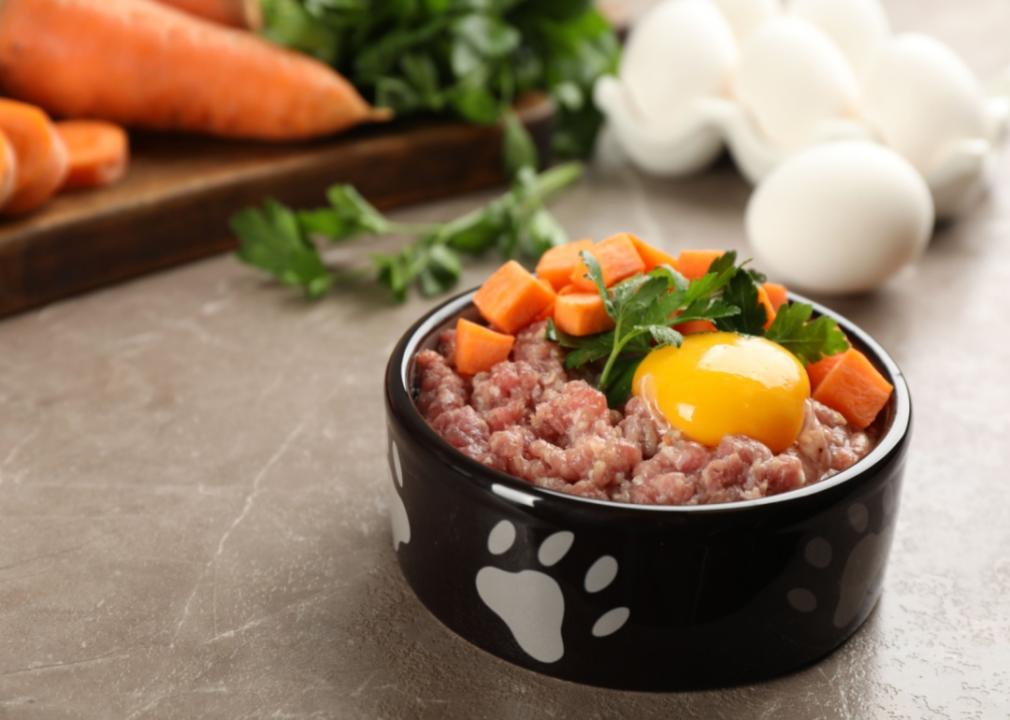
New Africa // Shutterstock
Dog diets: What to know about 4 fads and trends in dog nutrition
A bowl of raw dog food.
Americans have been looking to diets for miracle health cures and weight loss magic bullets since before the 1830s, trying everything from subsisting on nothing but grapes in the 1920s to different variations on high-fat, low-carb diets that persist in popularity today.
The global weight management market was valued at a staggering $142.58 billion in 2022, according to Grand View Research. Still, another industry behemoth proves consumers don’t just care about their own diets: They want to feed their pets only the best. At $103.3 billion in 2023, the pet food industry is growing year over year as pets become increasingly popular and more premium and bespoke options become available.
Dog diet and nutrition, in particular, have loomed increasingly large in the American consciousness in recent years. Some dog owners have moved away from the kibble-only diets of just a couple of decades ago and toward fresher, higher-quality, and more specific foods for their pups.
Dog wellness trends and fad diets, like raw meat and veganism, have likewise become more popular—and even correspond with human fad diets at times. Overlaps between human and dog diets are hardly surprising considering that, generationally speaking, Americans are trending toward adopting pets rather than having kids.
Much like human fad diets, these diets geared toward dogs are often based on inconclusive or shaky science and can be dangerous if not undertaken with all the available information. To help get the lowdown on the most popular dog fad diets, Ollie explored the nutritional value of four major ones using information from the Food and Drug Administration and the American Animal Hospital Association.
![]()
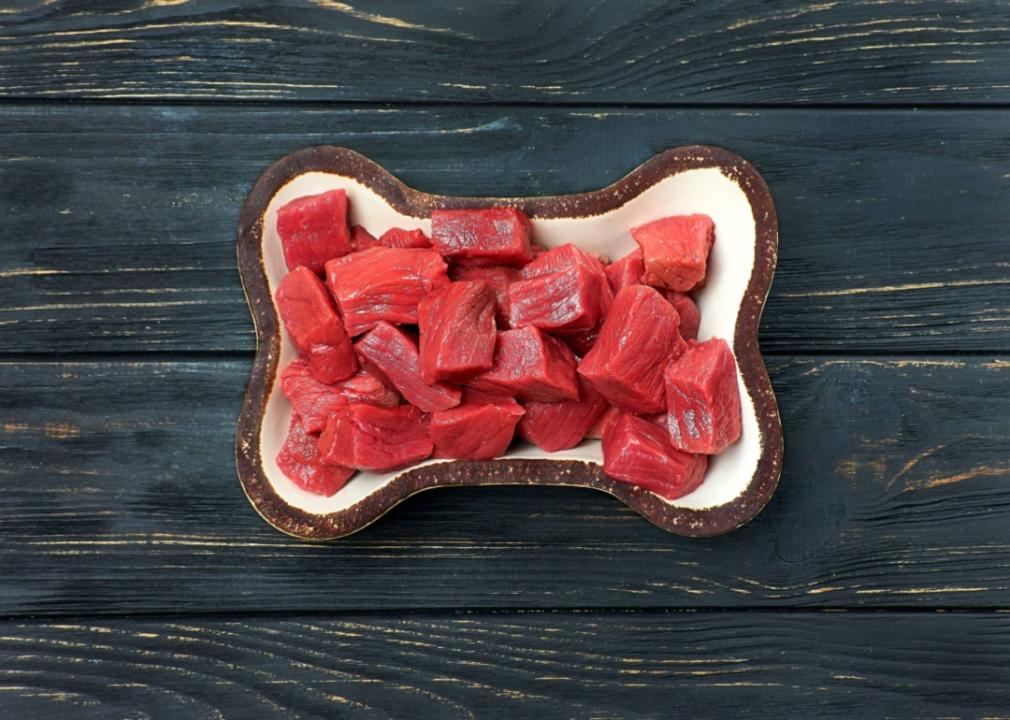
Zontica // Shutterstock
Raw food
Raw meat in a dog bowl.
In the early 2010s, interest surged in feeding dogs a raw food diet meant to imitate the diet wild dogs would have eaten thousands of years ago. This dog fad diet emerged when more and more people were exploring the paleo diet, which posits that eating “like our ancestors”—meaning only foods that could have ostensibly been hunted or gathered—aligns with our genetics. The paleo diet has long been debunked, but it remains popular: The paleo global foods market was estimated to be worth $12 billion in 2023, according to Global Industry Analysts.
Proponents of the raw food diet for dogs—which consists of ground or whole raw meats and bones, as well as raw fruits, veggies, and eggs—say it can result in higher energy levels, healthier coats, and cleaner teeth, among other benefits. Still, it can come with health risks for our four-legged friends too.
Veterinarians warn that a diet of raw meat and vegetables alone can result in serious nutritional deficiencies and that raw meats and eggs often carry food-borne illnesses like salmonella, which pose a threat to both animals and humans. The American Veterinary Medical Association has warned against feeding dogs a raw food diet and suggests pasteurizing or cooking these foods to reduce the risk of contamination.
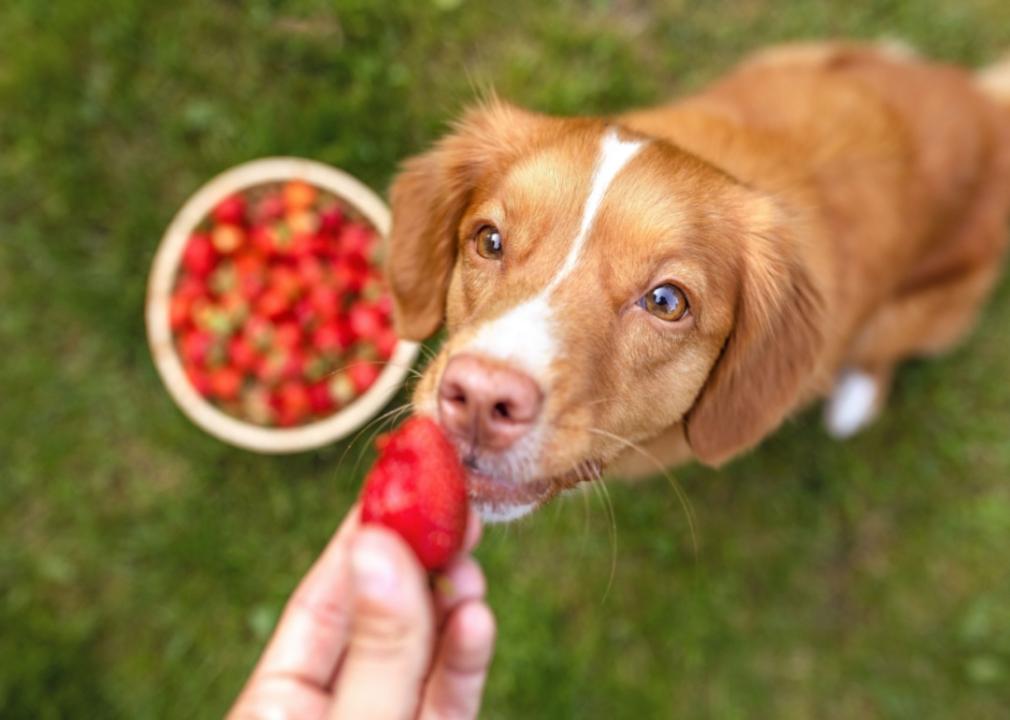
Zuzanna Paluch // Shutterstock
Vegan
A person handing a dog some fruit.
About 1% of American adults were vegan in 2023, according to a Gallup poll on eating preferences. Veganism peaked in 2018 at 3% of American adults, while vegetarianism was at its highest between 1999 and 2001 at 6%. Since human diet culture trends often make their way into the foods people feed their pets, discourse about vegan dog diets has become increasingly visible in the media and within communities of dog owners.
Plant-based, commercially produced dog foods often include ingredients like tofu, sweet potatoes, quinoa, and flaxseed oil, among other things. While vegan dog diets have been a source of controversy, with critics arguing that it is unethical not to feed dogs meat, the nutritional science around the health of vegan diets for dogs is inconclusive. While cats are obligate carnivores, meaning they derive essential nutrients from eating meat, dogs are more omnivorous and can, with a carefully balanced diet, be sustained by nonmeat-based foods. If you try a vegan dog diet, veterinarians advise monitoring your pet’s taurine, vitamin B12, and omega-3 levels to ensure they get the necessary nutrients.
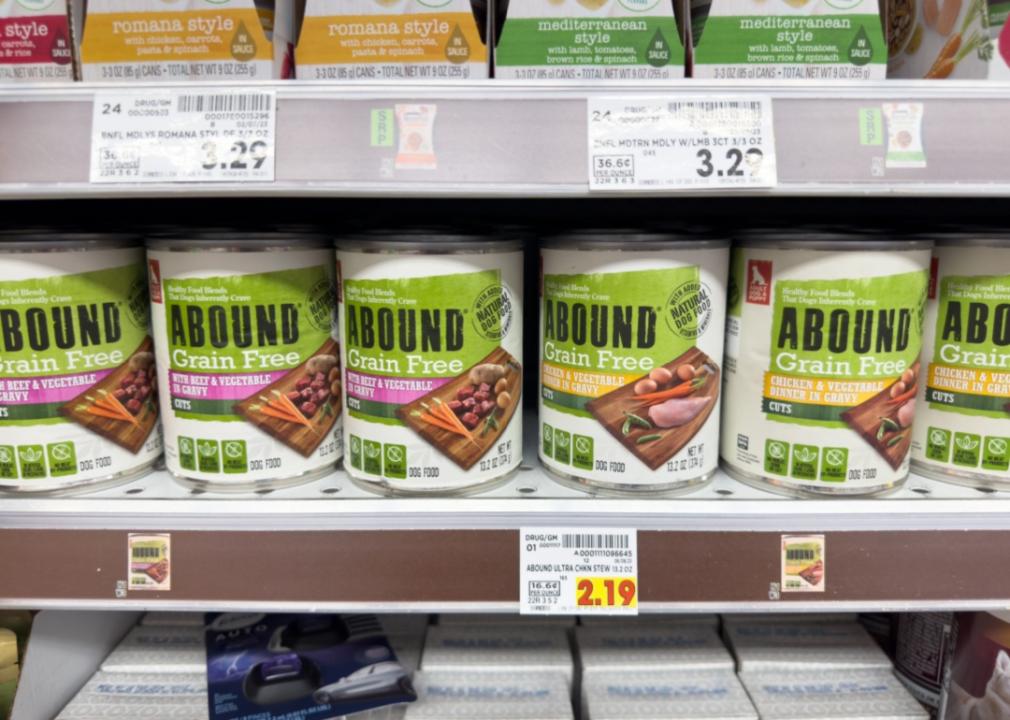
The Image Party // Shutterstock
Grain-free
Cans of grain-free dog food.
Grain-free pet foods rose in popularity as more Americans embraced keto and paleo diets, which mostly eschew grains and carbohydrates in favor of meats and vegetables. Grain-free dog food brands marketed the inclusion of grains as nutritionally worthless “fillers.” Still, veterinarians and animal nutrition experts have since cited the nutritional value of grains for a well-rounded dog diet.
In 2018, the FDA investigated increased reports of canine dilated cardiomyopathy, a heart disease that can be fatal to dogs. Many of these reports were associated with the consumption of grain-free dog food. Part of the link between canine dilated cardiomyopathy and diet appears to be insufficient taurine, a vital amino acid. Though there has not been proven causation between grain-free dog foods and heart disease, experts have cautioned consumers to stick with popular, well-vetted dog food brands that contain grains and meat.
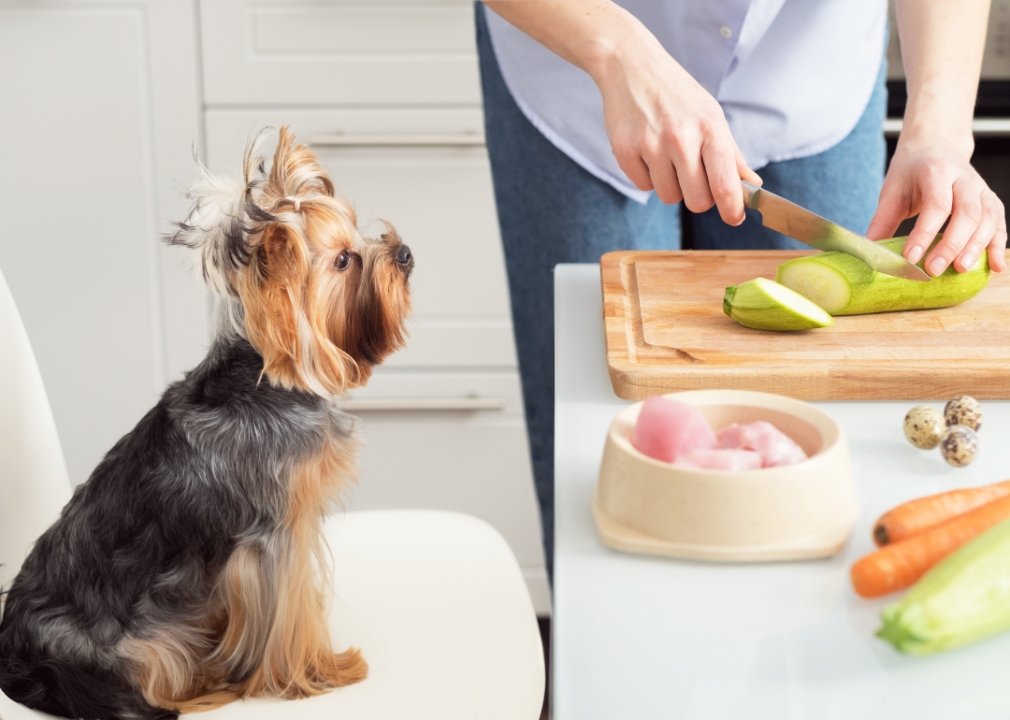
Tatiana Kochkina // Shutterstock
Home cooked
A dog watching a person make dog food.
Amid concerns over tainted pet food in the 2000s, some pet owners decided to forgo store-bought food altogether and cook for their furry companions instead. There’s nothing wrong with making homemade meals for dogs, and there are two sides to the argument. There is no proof that homemade food is better than commercial products, but then feeding processed foods is also akin to “eating the same highly processed food for every meal, day after day, for years,” Dr. Joe Bartge told the American Kennel Club. Vets advise reading carefully about dog nutrition beforehand.
For one, several human foods make dogs sick—including onion and garlic, grapes, and avocados—so it’s best to steer clear of those ingredients. Additionally, getting the balance of nutrients just right is imperative to keeping your dog healthy. If there is too much or too little of a certain vitamin or other nutrients in the food, your dog could develop severe health issues. It is important to consult a board-certified veterinary nutritionist about making home-cooked dog food and avoid generic internet recipes that may not have been developed by experts.
Story editing by Carren Jao. Additional editing by Kelly Glass. Copy editing by Paris Close. Photo selection by Lacy Kerrick.
This story originally appeared on Ollie and was produced and distributed in partnership with Stacker Studio.